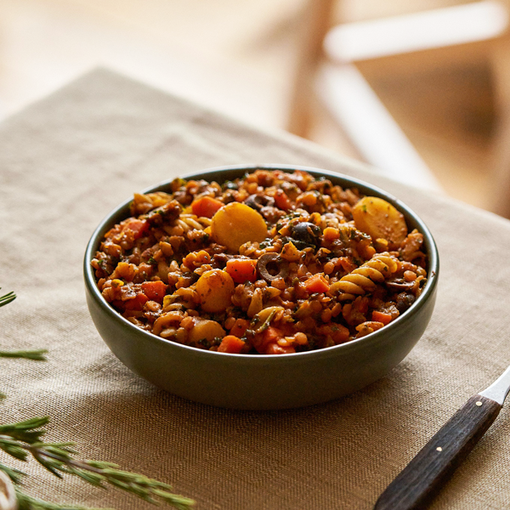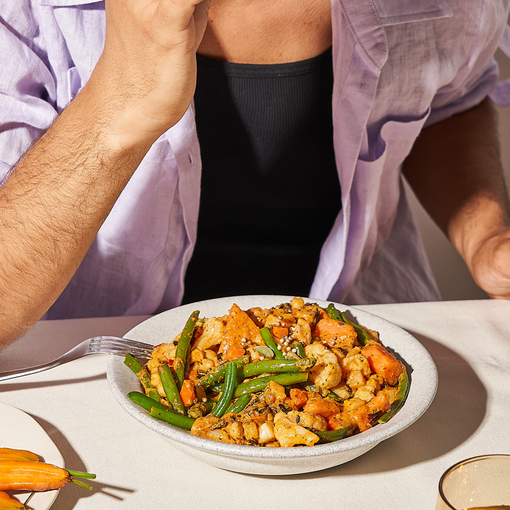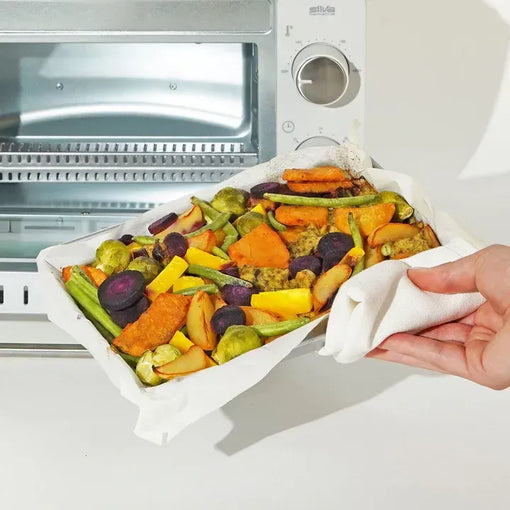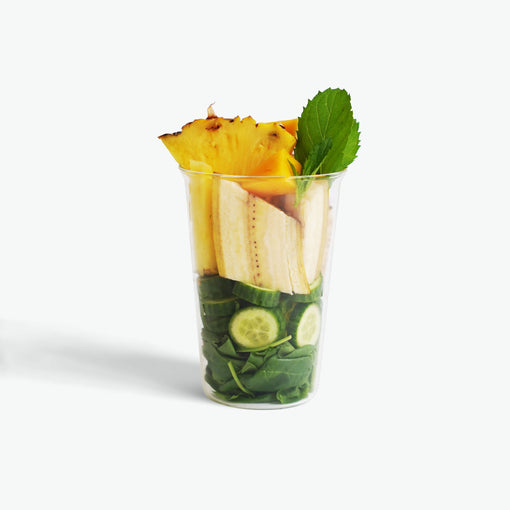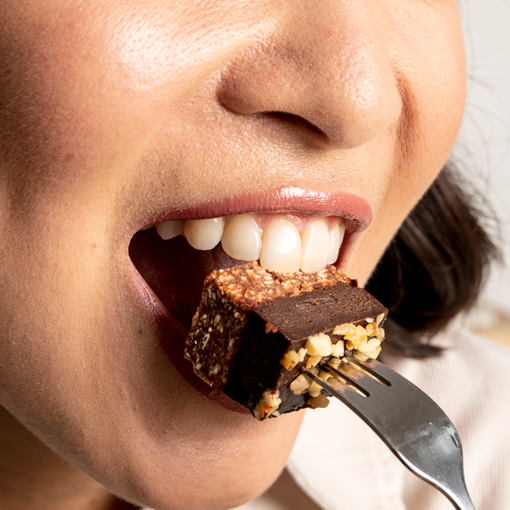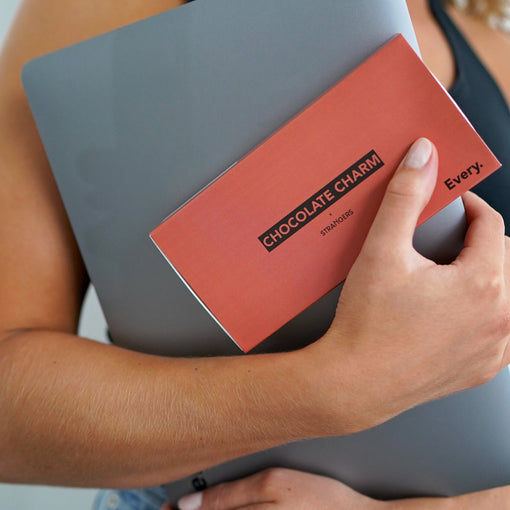Add {{ number }} more products to save {{ price }}
0
Add {{ number }} more products to save {{ price }}
noch 1 Produkt für gratis Versand (spare 5,99€)
Harvest Freshness
The prejudices surrounding frozen foods are extensive--and completely unjustified. We'll help clear up common misconceptions and explain why frozen produce, isn't always best.

Shock Freezing – Harvest Freshness on Your Table
Bursting with excitement, you grab your home made pasta salad from your freezer. But once thawed, disappointment sinks in: your meal is watery and unappetising and completely devoid of vitamins or nutrients.
Imagine you could keep your fruit and vegetables fresh and crisp for months, while also preserving important nutrients. Food that stays fresh until you decide you’re eat it. Sound like science fiction? Perhaps! But it's a reality. Shock freezing is responsible for this method of food preservation. We’ll explain the advantages and which advantages it brings.
Contents of this article:
- Cold food preservation: shock freezing, deep freezing and regular freezing
- The secret of shock freezing
- Is frozen food the new superfood?
- Stopping food waste with frozen foods?
- Freezing at home, is that possible?
Cold food preservation: shock freezing, deep freezing and regular freezing
Whether shock-frozen, deep-frozen or frozen - it's all kind of the same thing, isn't it? Actually, the processes have significant differences which start with the use of the different terms. While "shock freezing" or "deep freezing" refers to an industrial process, the simple "freezing" of food refers to the process in one's own freezer.
But what is the practical difference between these processes? Unlike freezing, shock freezing cools the food down to extreme negative degrees within a few minutes. This means that only very small ice crystals form and the cell walls and membranes remain undamaged. In this way, the cell structure of the food is largely preserved during thawing and important nutrients (vitamins and minerals) are locked in the cells: goodbye to soggy, mushy and nutrient-poor foods.
The secret of shock freezing
During shock freezing, foods are cooled down to -40°C within 1-2 minutes. This rapid cooling process protects the plant cells by stopping the cell metabolism and the multiplication of microorganisms. As a result, important nutrients, taste and consistency are optimally preserved while giving the food itself a longer shelf life.
For this reason, we at Every. also apply shock freezing technologies. The ingredients found in our bowls, soups and other meals are washed and cut directly after harvest. They are then frozen down to -40°C. This guarantees that only the freshest, most nutrient-dense ingredients land on your plate.
Is frozen food the new superfood?
After a long day in the office, you get home starving. Time (or motivation) to chop vegetables and cook a meal is nowhere to be found. Luckily, you have some peas, broccoli and other vegetable goodies in your freezer. The preparation of these foods takes considerably less time, but how healthy can frozen vegetables be?
Frozen vegetables and fruit often have the reputation of being second rate, and not as nutritious as their ‘fresh’ counterparts. But did you know that frozen produce is more nutritious than ‘fresh’ fruit and vegetables? Before you buy produce in the supermarket, it’s been lying around for several days, if not weeks, during transport and storage. During this time, it loses a significant amount of its natural nutrients. For example, carrots lose about 20% of their vitamin c content. Carrots that are frozen after harvest, keep these nutrients for much longer.
An additional benefit of shock freezing is that it's a very gentle method of food preservation. Through the rapid cooling process, the cell metabolism is stopped which prevents any microorganisms from developing. This preserves the quality, flavour and texture in a natural and gentle way. Chemical assistance in the form of preservatives are not needed.
Stopping food waste with frozen foods?
Roughly a third of all food produced in Germany lands directly in the trash. The reasons for these are diverse: overproduction, incorrect storage and best-before dates. Did you know that most food waste is generated in private households? A staggering 52% of food in homes lands in the trash. Either because they were processed incorrectly, or were simply forgotten.
Frozen foods can have a significant contribution to help reduce unnecessary food waste. Compared to fresh foods (depending on the storage) there is no risk of spoilage anytime soon. In fact, frozen foods tend to keep for many months, if not years. The same applies to the Every. meals which keep for at least a year if stored in a freezer.
Freezing at home, is that possible?
In these times where microwaves and other food-related technologies are abundant, the thawing and heating of foods is done in a few minutes. When it comes to the topic of freezing, it's slightly different. Fresh fruit, vegetables or pre-cooked food take a few hours to cool down to the optimum temperature in their own freezer. This leads to considerable losses in quality. The solution: the shock freezer for your home. With the help of this refrigerator, you can professionally freeze and gently preserve food and ready meals within a very short amount of time.
In conclusion, fresh fruit and vegetables should be a part of any household. However, it shouldn’t mean that frozen foods are shunned, quite the opposite. They can be valuable time saver and great nutritional source. Especially if you tend to be forgetful and let food spoil, you should incorporate more frozen things into your weekly shops. This way you can guarantee that nutritious options land on your plate, but you’ll also help reduce wastage.
Discover other exciting content in the Every. magazine:
- Understanding and Reducing Our Emissions
- Sustainable Packaging
- Superfoods – How Healthy and How 'Super' are They Really?
- Vegan Meat Alternatives – Everything, You Need to Know
- Food Waste – When Edible Food Lands in the Trash
For even more foodie-content follow us on Instagram and join the Facebook Community to get involved in meal creations and to stay up to date on all things Every.








